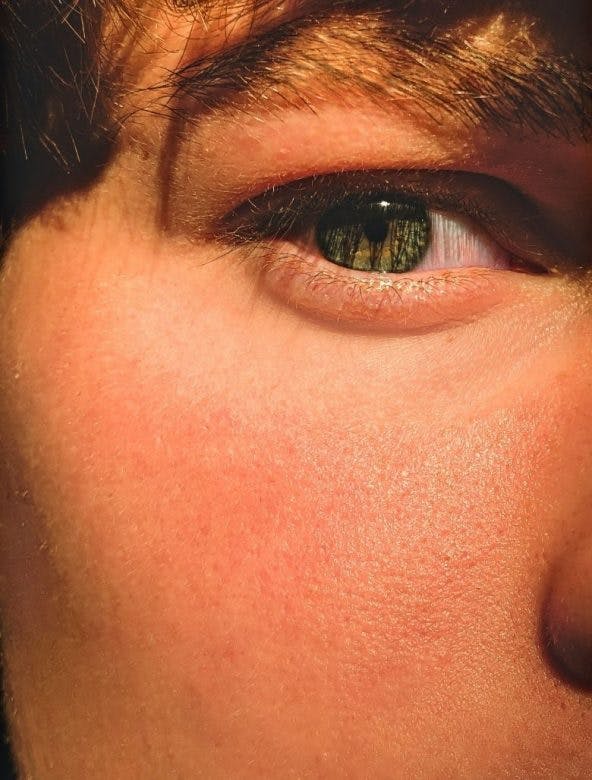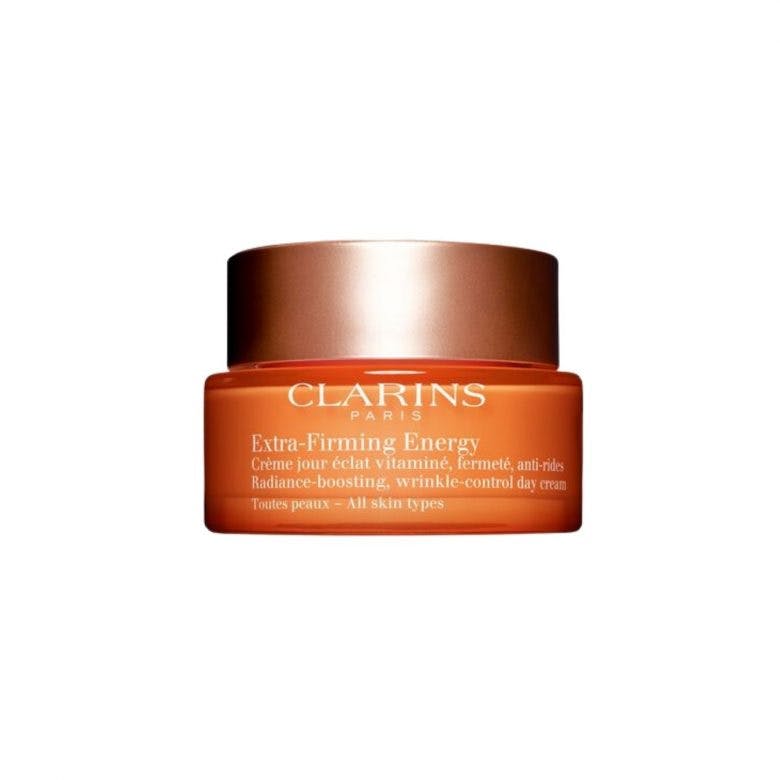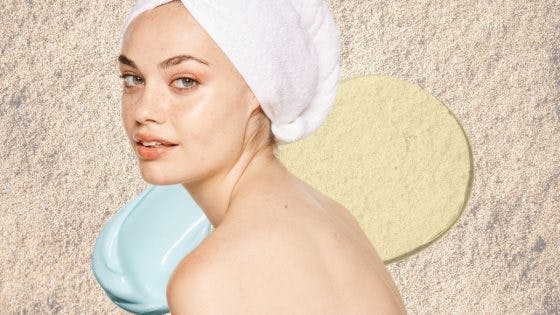Dehydrated vs Dry Skin: What’s the Difference?
6 minutes read
A common misconception is that dry and dehydrated skin is the same thing. Feeling confused? Don’t worry, Clarins Training Manager Charlotte Hollands simplifies it for us: “Dry skin is a skin type that lacks oil, while dehydrated is a skin condition that lacks water.”
Before you start looking for products to remedy your skin, you need to understand the difference between dehydrated and dry skin.
Is your skin dehydrated?
Hollands advises, “You can typically tell if it’s dehydrated, if you gently push your cheek up towards your eye and notice fine horizontal lines.” When you have this skin type – there are plenty of skincare options to choose from.

What you need to know is: “It can happen at any time and at any age. You can have combination skin and still be dehydrated at the same time.” Hollands advises to
“Rehydrate by drinking water and also use products which drip-feed the skin with hydration – like the Hydra-Essential range; it contains Leaf of Life and is known for it’s incredible water retention capabilities. This plant teaches the skin’s “sponge molecules” to do the same and helps the skin’s natural water retention system.”
Characteristics of dehydrated skin include:
- Feeling itchy or uncomfortable
- Dull complexion
- Fine lines or wrinkles
- Dark under-eyes
Is your skin dry?
Dry skin, on the other hand, is considered a skin type. A dry skin type is determined by your genes and is your skin’s natural state without using any skincare products.
Dryness is caused by a lack of natural oils, or lipids, that your skin produces, meaning your skin has a harder time retaining moisture.
Take a moment to reflect on these characteristics and study your skin closely. Of course, the best test is to analyse your skin by touch – does it feel tight or rough?
Hollands explains,
Hollands explains, “Flaky patches are a common sign of dry skin; try layering up your skincare at night: apply a serum, followed by a rich cream and then an oil for your skin type to lock it all the moisture in.”
Characteristics of dry skin include:
- Tightness
- Flaking or scaly skin
- Signs of redness or irritation
Hydrate vs moisturise: Ingredients for your skin’s needs
Now that you have a clearer idea of whether you have dehydrated vs dry skin, it’s time to look at how you can meet your skin’s specific needs.
You may have become confused about whether to hydrate vs moisturise. Still, the easy distinction to make is that hydration is for internal skin function, whereas to moisturise is for the external skin feel.
Ingredients to treat dehydrated skin:
- Hyaluronic acid can help to retain water in the skin (try Hydra-Essentiel Silky Cream)
- Glycerin can help to draw water from the deeper layers of the skin
- Aloe can soothe irritation
- Lactic acid can help with dull or uneven complexions
Ingredients to treat dry skin:
- Nut and seed oils, such as coconut, hazelnut (try Santal Treatment Oil, £40), almond and hemp (if you have a nut allergy – then please read the label first.)
- Plant oils such as squalene, jojoba, and rosehip
Tips for hydrating your skin
Keeping your skin feeling soft, smooth and glowing doesn’t have to be restricted to AM/PM routines. There are plenty of ways you can hydrate on the go. Here are our top 3:
1. Drink more water
We know you’ve heard this one before, but it cannot be stressed enough. Our bodies need water to function correctly and our skin is no exception. So think of it like this: internal hydration for external radiance.
According to the NHS, while everyone varies on how much water they should consume, the general rule is 6-8 glasses per day. So, try setting a reminder on your phone or in your calendar to prompt you to rehydrate at regular intervals. Or download a water tracker app to keep on top of it.
2. Misting skin
Do you find that your dehydrated skin on the face starts to feel tight or uncomfortable throughout the day, but you don’t want to apply another layer of moisturiser? Try spritzing your face with a hydrating mist.
Face mists are lightweight and can be applied on top of your make-up to give you a hydration boost when you need it most; on the school run, post-gym, quick coffee break, you name it.
Editor’s pick: The Hydra-Essentiel Hydrating Multi-Protection Mist, £26 refreshes and hydrates for radiant skin and protects against environmental aggressors.
3. Eat more water-rich foods
Here you can combine two of our great loves in life: skincare and food. By incorporating water-rich foods as part of your daily diet, you get to nourish your skin from within while also treating yourself to wholesome goodness.
Try foods such as cucumber, melon (cantaloupe, watermelon, honeydew), tomatoes, spinach, strawberries, oranges, cauliflower (yes, really) and courgette. Experiment with smoothie recipes and simple salads, and you’ll soon find your 5-a-day start to brighter, healthier skin.
Next read: The best foods to eat for healthy skin.
Tips for dry skin
If you have a dry skin type, make sure you’re giving your skin the comforting moisture and nourishment it’s craving.
Moisturise correctly
This might sound like the most basic skincare advice, but you must choose a moisturiser that works for your dry skin, any skin conditions you may have, and for the age of your skin. Doing so will help you keep your skin smooth and nourished while also tackling your other skincare needs.
Layering your skincare is the best tool you can employ here. Use a hydrating serum and seal it in with a rich and comforting cream, followed by an SPF of choice.
If your dry skin is looking dull and tired, try a moisturiser that will put the glow back into your complexion while adding firmness to your skin, like this Extra-Firming Energy Moisturiser, £65,, and for men – especially when facing the elements – we recommend the Super Moisture Balm, £32.

Try a humidifier
The seasons can cause changes in your dry skin, but so can the climates we create indoors. Air conditioning and heating can sap the moisture from our skin. While you can’t control the weather, you can reclaim a degree of control over your home and office spaces.
Humidifiers are great for balancing humidity levels in the air, giving your skin the moisture it needs to feel comfortable again. As a bonus, you can also apply a few drops of essential oils into your humidifier to treat yourself to some aromatherapy throughout the day. Happy skin, happy mind.
Now that you know the differences between dry and dehydrated skin read up on the 5 Active Ingredients Your Skin Needs This Winter.
Sign up for our newsletter
We will keep you in the loop for special offers, exclusive gifts and product news.

